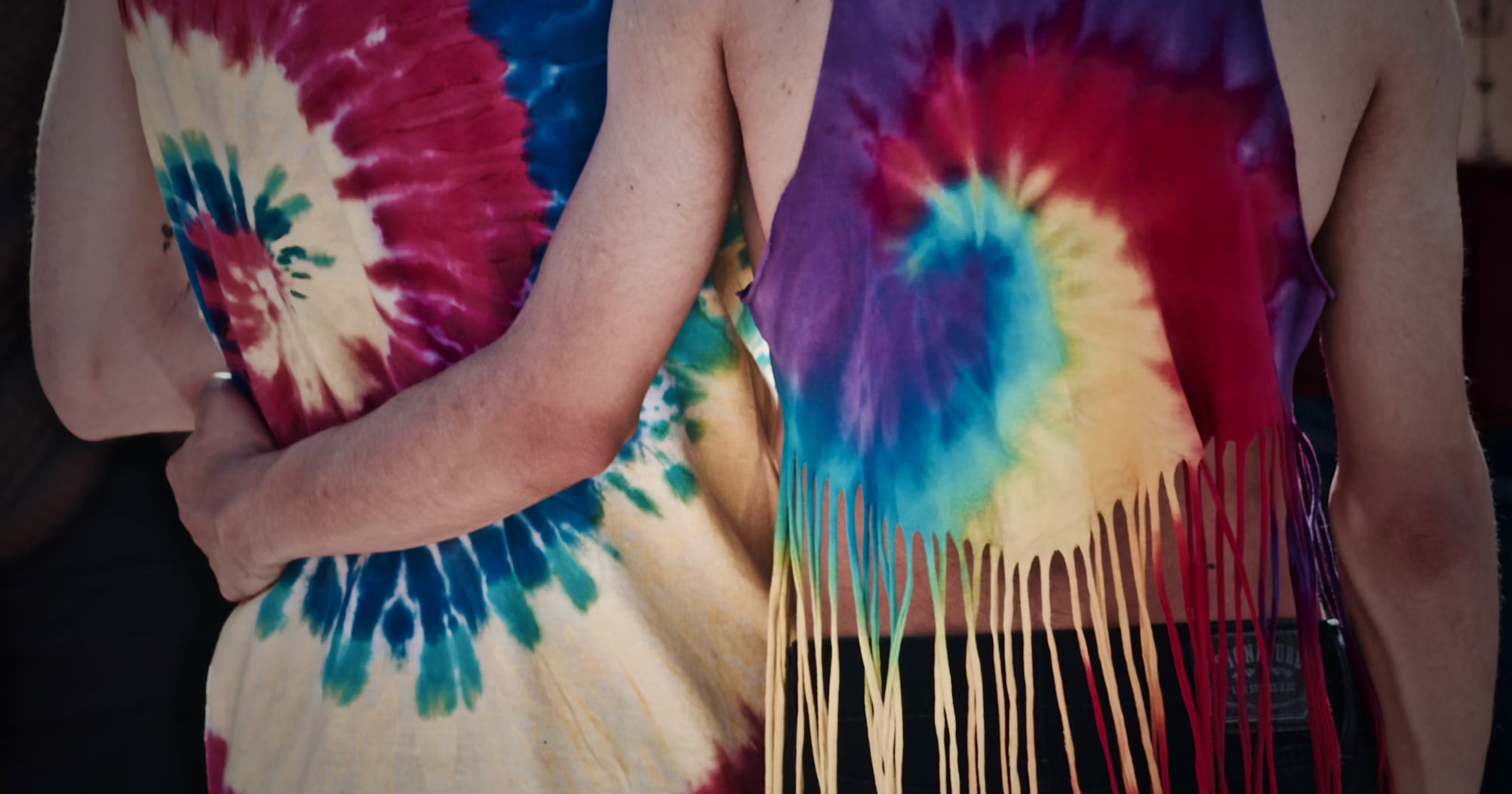Almost synonymous with the hippie movement, tie-dye is a statement style; it features bright swirls and patterns that reach near fluorescent luminescence. And how did this giddy art become an emblem of rebellion? Read on to find out.
The Origins of Tie-Dye
Tie-dye has a much older history than the 1960s and the tie-dye t-shirts you’ll find on websites like Wordans. In fact, this type of dyeing technique started to appear in different societies thousands of years ago. For example, early forms of tie-dye trace back to ancient China and Japan, when artisans used natural dyes from plants or flowers – even berries. Shibori is the original Japanese tie-dyeing technique, with beautiful patterns made by folding, twisting, and binding fabric before dyeing.
In Africa, the tie-dyeing technique was common in regions like Nigeria, where it is known by the name Adire. Most of these methods used indigo dye and resist-dyeing techniques to form beautiful patterns. In India, for example, the technique in Bandhani was to tie tiny knots on fabric and then dye it, which resulted in clear and detailed patterns.
Hippie Movement and Tie-Dye
The link between tie-dye and the hippie movement was forged in that era of social change – the 1960s. There was a passion for cultural expression running strong in America. The counterculture hippies, mostly radicals and disenfranchised young people, had all but given up on the government, traditional moral values, and standards. It was also marked by a vibrant music scene, psychedelic drug use, and the desire for personal expression.
There are many reasons why tie-dye came to be such a symbol of the hippie ethos. At first, it was an expression of individuality and creativity – fashion that could cut through conformity with one-of-a-kind pieces. Tie-dye’s bright, swirling patterns also mirrored the visual hallucinations common in psychedelic trips, appealing to the hippy interest in new modes of perception.
Tie-dye could be made at home using readily available sources of dye and methods such as dipping the material in sections to achieve varied patterns, which also appealed to a youth culture focused on DIY crafts. Hits such as the Woodstock Festival of 1969 also caused large numbers of tie-dye.
Different Tie-Dye Clothing Pieces
There’s an extensive collection of items that people love to tie-dye. The most iconic piece is the tie-dye t-shirt. These shirts come in various designs, from spirals and stripes to crumples and mandalas; each piece is essentially a wearable masterpiece.
This season, the line goes far deeper than just tie-dye t-shirts, with tie-dye sweatpants as an option for the perfect loungewear. People also love tie-dye hoodies. While not as prevalent, tie-dye socks are a low-key way of giving the trend visibility in everyday wardrobes.
The tie-dye trend extends to accessories. This trend started with bandanas and then moved to hats and even backpacks. Everything is customizable, meaning you can have fun showing your personality with whatever outfit you choose.
Whether on typical t-shirts, casual hoodies, or playful accessories, tie-dye print has remained an iconic statement of fashion that promotes uniqueness and ingenuity. The next time you look at those beautiful swirls, remember the history of flavor and rebellion behind them.










